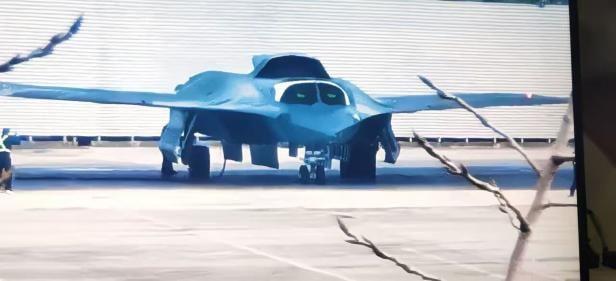Introduction: China’s J-36 Fighter Jet and Its Rising Influence in Asia-Pacific Air Power
In today’s geopolitical landscape, air dominance plays a crucial role in shaping national security strategies. China’s newest combat aircraft, the J-36, marks a remarkable advancement in its military aviation arsenal. This state-of-the-art fighter jet combines innovative technologies with strategic foresight, signaling Beijing’s intent to strengthen its foothold across the Asia-Pacific theater. As regional tensions intensify and defense doctrines evolve, this analysis explores the design features, operational strengths, and wider geopolitical ramifications of the J-36—shedding light on how it may alter power dynamics throughout East Asia.
Technological Breakthroughs Defining China’s J-36 Fighter Jet
The J-36 embodies a transformative step forward for Chinese aerial warfare capabilities by incorporating an array of sophisticated technologies aimed at maximizing combat performance and mission adaptability. Key innovations include:
- Stealth Optimization: Utilizing advanced composite materials alongside aerodynamic shaping techniques significantly diminishes its radar visibility, enabling it to slip past enemy detection systems more effectively.
- Sustained Supersonic Flight (Supercruise): Enhanced engine designs allow continuous supersonic speeds without relying on afterburners—improving fuel economy and extending operational range during critical missions.
- Cutting-edge Avionics Suite: The cockpit integrates AI-driven flight assistance tools coupled with digital displays that heighten pilot awareness and streamline decision-making under high-pressure combat conditions.
Beyond these core attributes, the aircraft boasts a modular architecture facilitating swift upgrades to keep pace with evolving threats. This flexibility is further supported by:
- Multifunctional Role Capability: Engineered for diverse tasks such as air superiority engagements, precision ground strikes, reconnaissance operations, and electronic warfare support.
- Next-Level Armament Systems: Equipped to deploy an extensive range of munitions—from smart bombs guided by satellite navigation to advanced beyond-visual-range missiles—broadening tactical options.
- Integrated Network-Centric Warfare Features: Real-time data exchange capabilities link the J-36 seamlessly with other assets like drones and command centers for coordinated battlefield awareness.
| Main Feature | Description of Advancement |
|---|---|
| Radar Evasion (Stealth) | Dramatically reduced radar cross-section through material science innovations |
| Sustained Speed (Supercruise) | Sustains supersonic velocity without afterburner use for longer durations |
| Evolvability (Modularity) | Easily upgradable systems ensuring longevity against emerging threats |
Regional Air Superiority Shifts: Geopolitical Consequences Stemming from the J-36 Deployment
The deployment of China’s J-36 introduces a new variable into Asia-Pacific military calculations. Its combination of stealth technology and enhanced avionics elevates China’s capacity to assert control over contested airspaces—a development that compels neighboring states to reassess their own aerial defense strategies.
This evolution triggers several notable trends:
- An Escalation in Military Competition: Regional powers are likely to accelerate indigenous fighter programs or seek acquisitions that can counterbalance China’s growing edge.
- The Formation or Reinforcement of Strategic Alliances: Countries may deepen partnerships—bilateral or multilateral—to pool resources against shared aerospace challenges posed by Beijing’s advancements.
- A Shift Toward Integrated Defense Architectures:The emphasis will increasingly be placed on synchronizing missile defense networks with air force operations for comprehensive threat mitigation across multiple domains.
To contextualize these developments within current regional forces’ priorities:
| Nation | Primary Combat Aircraft | Strategic Focus Areas |
|---|---|---|
| China | J-20 & newly introduced J-36 | Stealth technology & networked warfare integration |
This intensifying competition underscores an urgent need for countries within this volatile region not only to boost their own aerial capabilities but also explore cooperative frameworks that can collectively deter potential conflicts sparked by shifting power balances.
Policy Strategies: Navigating Responses to China’s Expanding Aerospace Prowess
Given China’s rapid progress in aerospace technology exemplified by platforms like the J-36 jetfighter, policymakers must adopt comprehensive measures designed both around collaboration and innovation.
Key recommendations include:
- Bilateral/Multilateral Security Cooperation Enhancement: Strengthening existing alliances while fostering new partnerships focused on intelligence sharing,
joint training exercises,
and coordinated technological development initiatives.
- Pursuit Of Indigenous Aerospace Innovation : Prioritizing investment into domestic research facilities
and incentivizing public-private collaborations aimed at accelerating homegrown aerospace breakthroughs.
- Cultivation Of Skilled Workforce : Expanding educational programs specializing in aeronautical engineering
and related disciplines ensures sustained talent pipelines capable of supporting long-term industry growth.
- Create Regular Multinational Forums : Establishing platforms dedicated specifically toward discussing emerging aerospace threats
sharing best practices,
and coordinating policy responses enhances collective preparedness.
These approaches combined will help build resilient defenses capable not only of responding effectively but also anticipating future challenges posed by evolving Chinese military aviation technologies.
A balanced strategy emphasizing cooperation alongside technological advancement remains essential as nations adapt their security postures amid shifting regional dynamics driven largely by innovations such as those embodied in the J–36 fighter jet.
Looking Ahead: The Broader Impact of China’s Next Generation Fighter Jets on Regional Security Dynamics
As Beijing continues modernizing its air force through cutting-edge platforms like the newly unveiled J–36 aircraft, the implications extend well beyond mere hardware enhancements. This evolution signals a broader transformation affecting diplomatic relations,
military doctrines,
and strategic calculations throughout East Asia.Neighboring countries along with global stakeholders are closely monitoring these developments given their potential influence over future conflict deterrence mechanisms and alliance formations.
Understanding how such advancements reshape aerial dominance is vital—not just from a technical standpoint but also regarding international diplomacy and stability efforts.
Ultimately, China’s expanding air power narrative represents more than national ambition—it constitutes a pivotal chapter influencing peace prospects across one of today’s most strategically sensitive regions worldwide.
- Cultivation Of Skilled Workforce : Expanding educational programs specializing in aeronautical engineering














